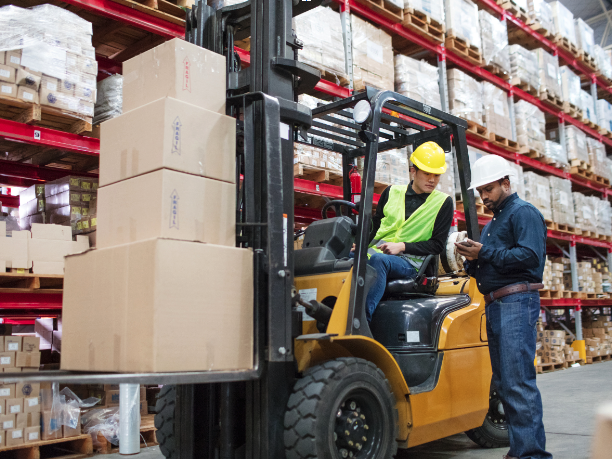SafeDE News
Smarter workplaces are safer workplaces. SafeDE is your resource for OSHA news, regulation changes, recalls, and everything to keep your business safe.
Ladder Inspection Requirements: What You Need to Know
Using ladders on a regular basis poses an increased risk of serious injury to your workers. You can drastically reduce the chances of workplace injury by following OSHA-mandated ladder inspection checklists before using equipment. Imploring your workers to follow the guidelines is just as important. As a manager or leader, you set the tone when it comes to workplace safety.
In 2020, despite intermittent work stoppages from the COVID-19 pandemic, the U.S. recorded 22,710 workplace injuries involving ladders, with more than half of those coming in the construction, extraction, installation, and maintenance. In 161 of those cases, there was a death involved.
Below, we’ll cover some of the more significant aspects of pre-use ladder inspection requirements. We’ll also break down other essential tips for safe ladder use to share with your teams.
Important Ladder Elements to Inspect Before Using
Safe ladder use begins before anyone steps onto the first rung.
Make sure the manufacturer provided all necessary tags and notices, which can indicate that the ladder has no inherent defects or flaws. These tags and stickers usually have information on the ladder’s weight limit and duty rating, among other important details.
If the ladder has no obvious defects or limitations, we recommend starting the inspection of each element.
Angle and Extension
OSHA strongly recommends the base of non-self-supporting ladders be placed one-fourth of the working length away from the structure being worked on.
The working length is the distance from the base to the topmost part of the ladder touching the structure. This rule-of-thumb (often referred to as the 4-1 rule) usually puts the ladder’s angle at around 75.5 degrees.
Base
One of the first things to check before placing the ladder against a structure is the ground and its condition. It should be secure and level, with nothing that might compromise the ladder’s sturdiness as it’s being used.
Ladders are usually safer when the feet are covered with a rubber encasement, which prevents slippage. It can be tempting to place the feet on a portable solid object if you need a few extra feet to reach your destination, but this can make the ladder highly unstable.
Side Rails
The side rails should be securely fastened to each rung; take a few moments to look over each section of the side rails to ensure structural integrity. Check for dents, rust, corrosion, and other visible flaws.
It may not be necessary or feasible to measure the distance between side rails before every use, but OSHA requires at least 11.5 inches of clear distance for portable ladders and 16 inches for fixed ladders.
Additionally, OSHA mandates at least three feet of side rail be extended over the top support of the structure. This extension amount does not count toward the working length.
Rungs
Give each rung the same twice-over you gave the side rails; look for dents, cracks, and debris that may compromise the ability to safely put your weight on any rung.
All rungs should be parallel to the ground and evenly spaced apart. The distance between each rung on most portable ladders should be between 10 and 14 inches.
Ladders made after March 15, 1991 are required to include corrugation, dimples, or other skid-resistant materials on the spaces where users’ feet meet the rungs.
Best Practices When Climbing Ladders
After you determine that a ladder is fit to use on a job site, it’s important not to behave recklessly while on the ladder. Safe usage involves:
- Having three points of contact (both feet and at least one hand) on the ladder at all times
- Not stepping onto the top rung of a ladder unless it is specifically designed for that purpose
- Facing the ladder while ascending it
- Climbing or descending the ladder one rung at a time
- Communicating with other workers who may be operating near the base or top support
Final Thoughts on Workplace Ladder Safety
Using ladders safely at worksites can become a habit if you are diligent about following OSHA-approved guidelines with every use. Conversely, you and your team can pick up bad habits fairly easily.
Whether you’re trying to save time or money, it can be tempting to cut corners on occasion. The ultimate time-sink and money-waster, however, is a serious workplace injury or massive OSHA fine.
Frequently Asked Questions (FAQs)
Why is ladder inspection important?
Ladder inspection is important because serious workplace accidents or deaths can occur if even one part of a ladder is compromised. Inspecting ladders before each use may also increase their longevity.
What should I look for when inspecting a ladder?
When inspecting a ladder, ensure that all physical components—rungs, side rails, spreader bars, feet, and pads—are defect-free and relatively clean. You should also ensure a proper distance is maintained between the ladder’s base and the bottom of the structure, as well as confirm secure and level ground under the base.
How often should ladders be inspected?
We recommend inspecting ladders before every use, especially after an extended period of non-use.
Can I use a ladder that has defects or damage?
It is never advisable to use a ladder with defects or damage. The odds of having an accident while using a defective ladder are much higher than those while using a secure ladder.
What should I do if I find a defective ladder during inspection?
If you spot a defective ladder during an inspection, you should notify your supervisor or safety contact right away and make sure the flawed ladder is marked as such.
Get SafeDE News
Workplace safety for all businesses.
SafeDE provides FREE comprehensive onsite surveys for small and medium sized private sector establishments to identify potential workplace hazards, improve safety and health management systems, and assist in voluntary compliance with federal OSHA regulations.
Related News

Safe & Sound: Top 100 Workplace Safety Slogans for a Safer Environment
-1.png)
Committed to Safety: What is It & Why It Matters

Your Complete Guide to Workplace Health and Safety During Halloween
-1.png)
10 Electrical Safety Precautions for Injury Prevention
-2.png)
Your Complete Guide to Workplace Health and Safety During Halloween
-1.png)
Essential Workplace Fire Safety Tips to Prevent Fires
-1.png)
5 Essential Workplace Fire Safety Tips to Prevent Fires
-1.png)
Workplace Safety Tips: Protect Yourself with PPE and More
-1.png)



